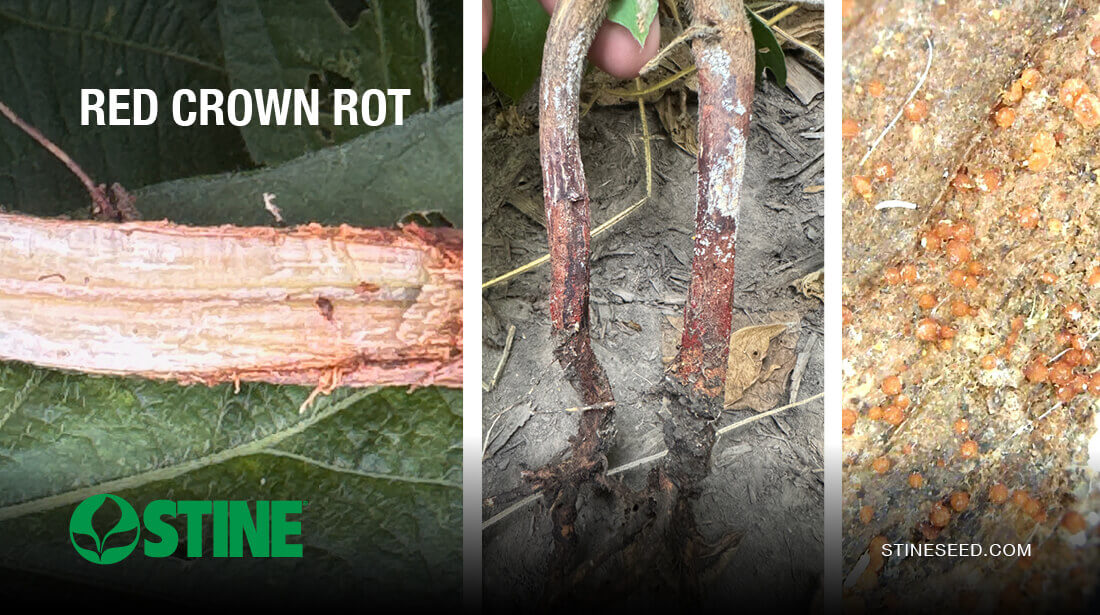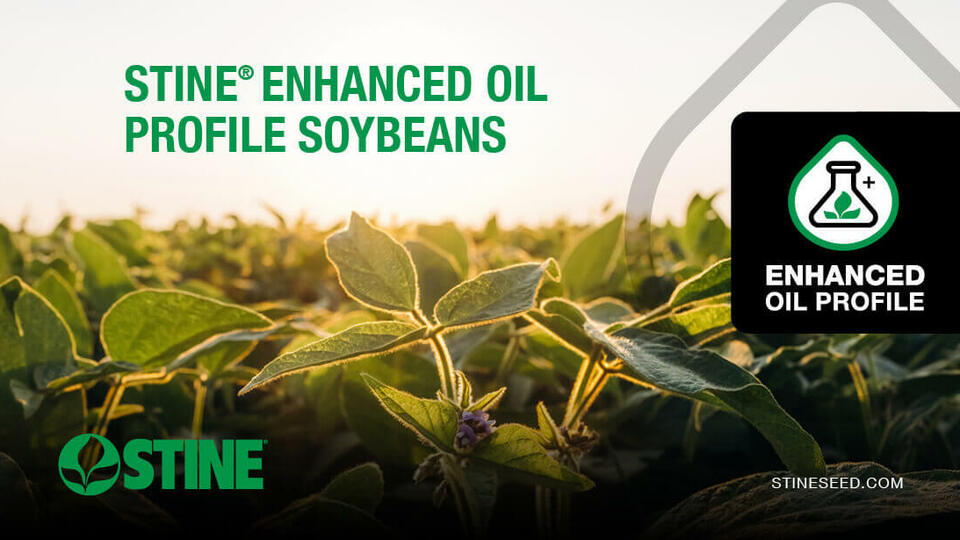With all the focus on white mold and sudden death syndrome (SDS) in soybeans, it’s easy to overlook an emerging threat that is gaining ground across the Midwest: red crown rot (RCR). Once considered a more common concern in the Southern U.S., this soilborne fungal disease is now showing up farther north and is proving to be more aggressive than initially expected.

“Red crown rot might not be on everyone’s radar, but it should be,” says Tyler DuBay, soybean technical agronomist for Stine® Seed Company. “We’re seeing it earlier this year, and anticipate it spreading more in states like Illinois, Indiana, and even parts of Iowa, especially in seasons like this one with heavy rain and saturated soils.”
Stine Technical Agronomist Bill Kessinger noted in a recent episode of the “Stine Seedcast” that the disease has already made its way into parts of southern and central Illinois, and he anticipates seeing more hot spots pop up this fall.
What is red crown rot?
Caused by the fungus Calonectria ilicicola, red crown rot infects soybean plants through the roots and thrives in warm, wet, compacted conditions. It can survive in the ground for years and is often mistaken for SDS or Brown Stem Rot (BSR) in the field — until harvest time, when the yield impact becomes all too clear.
The disease causes characteristic reddish discoloration near the soil line, crown rot at the base of the plant, and leaf symptoms like interveinal chlorosis and defoliation. Affected plants often die prematurely and may be scattered across a field or clustered in areas with poor drainage.
“If you’re looking at the plant, look at the vascular tissue. If it’s white, it’s likely SDS. If it’s brown, it’s probably brown stem rot. For red crown rot, look at the base of the stem. What you’re going to see is red coloration. Get some magnification on it. … You’ll see little red balls called perithecia. This is a telltale sign you’re seeing it."
Bill Kessinger, Stine Technical Agronomist
Kessinger also notes that RCR typically causes the plant to die quicker than SDS, but another sign is the stem turns black while the foliage remains attached.
Regional concern, local action
According to some reports, red crown rot has already been confirmed in several Midwest counties and is being actively monitored by university researchers. While not yet as widespread as SDS, its spread is accelerating.
“RCR has the potential to be a sleeper disease. It’s one that doesn’t fully show its hand until weeks from harvest, when yield checks start coming in. That’s why it’s important to know what to look for and to plan ahead.”
Tyler DuBay, Stine soybean technical agronomist
What can growers do?
Red crown rot is hard to eliminate once established, but there are several best practices that can help reduce its impact:
- Clean equipment. Clean all harvest equipment prior to leaving infected fields and transferring to new ones.
- Improve soil drainage. Fields with heavy compaction or poor water movement are at higher risk.
- Rotate crops. Corn and nonhost crops help reduce inoculum buildup.
- Avoid susceptible varieties. Choose soybean genetics with strong disease tolerance.
- Scout smart. Watch for yellowing or early dying soybeans in areas prone to moisture stress. Pull up the plant and inspect the vascular tissue and roots, not just the foliage.
- Be cautious with irrigation. Overwatering can exacerbate the issue in already wet conditions.
- Harvest infected fields last. The disease can spread through equipment, so consider harvesting infected fields last to prevent accidental spread through moving equipment.
Early communication and studies have shown some soybean varieties are tolerant to RCR. That’s why Stine is conducting studies in southern Illinois this year to confirm ratings.
“This will enable us to provide tolerant products to customers and develop our genetics even more to bring tolerant products to the market,” notes DuBay.
Want to learn more about how Stine combats soybean diseases? Contact your local Stine representative or one of our agronomists for more insights.
Related Articles
-

Start strong with Stine®: Maximizing your 2026 potential
January 2026 in Agronomy
-

Stine® to offer Syngenta’s Victrato® soybean seed treatment in 2026
December 2025 in Agronomy
-

Use Stine’s XP® seed treatments to prevent early injury to your crops
December 2025 in Agronomy
-

Understanding Stine’s enhanced oil profile soybeans
December 2025 in Agronomy



